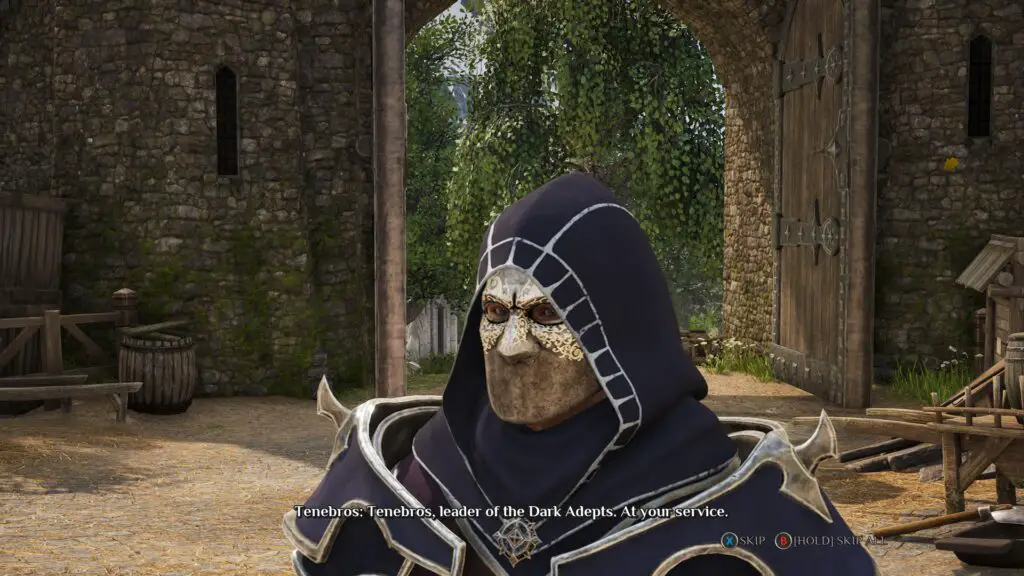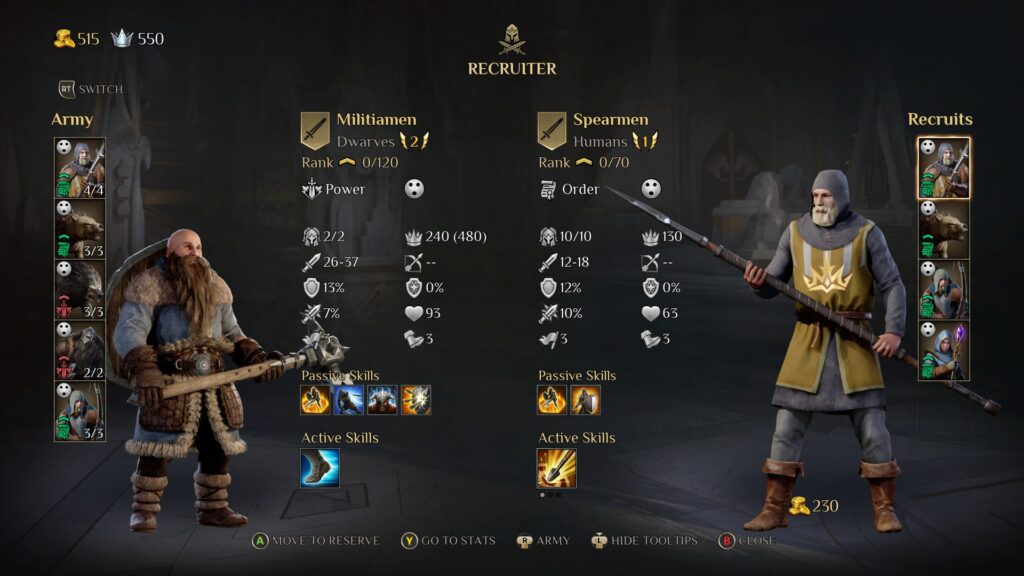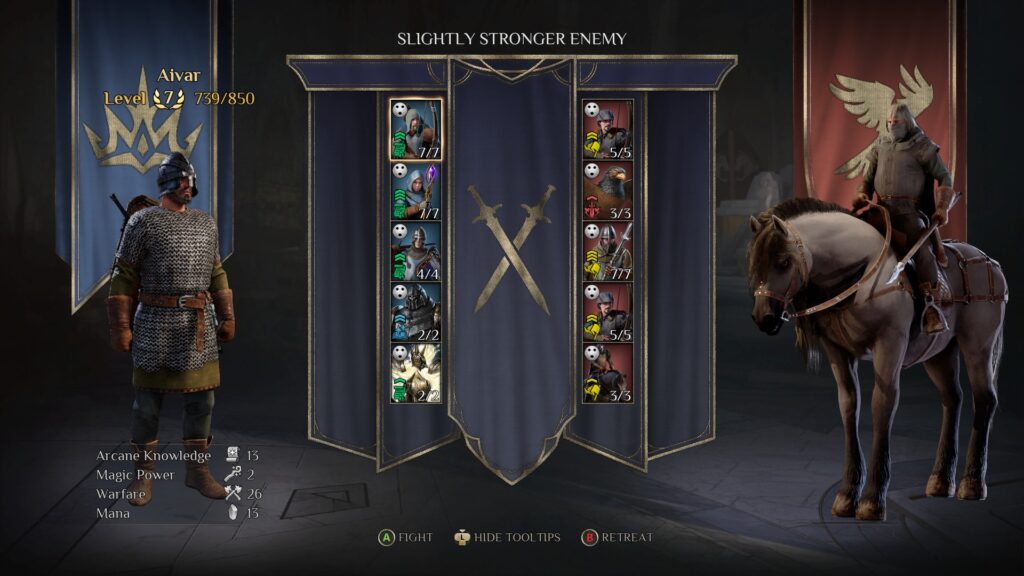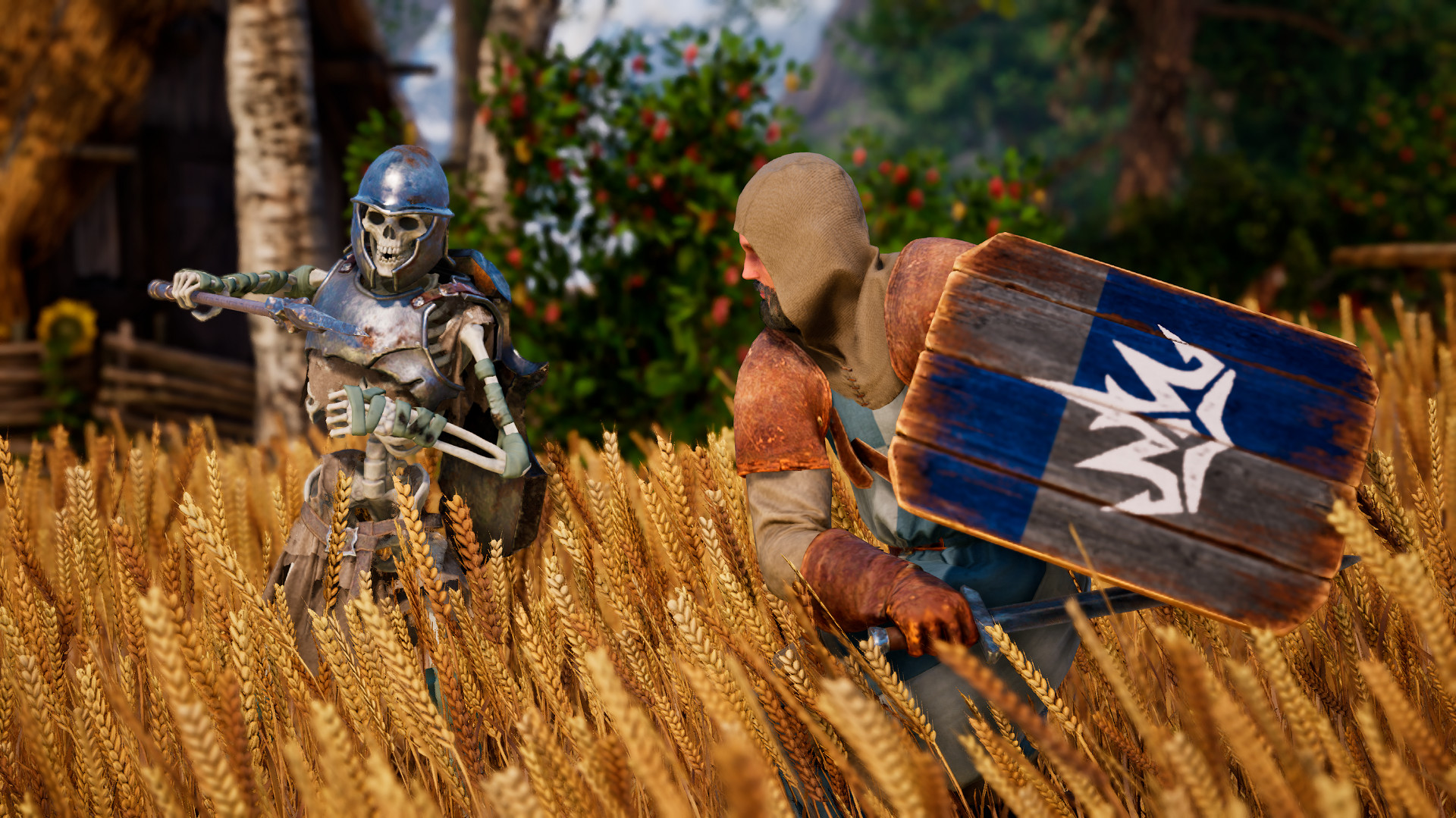Just about any veteran strategy gamer out there will be able to tell you about their experience with the King’s Bounty series. I first jumped into it with King’s Bounty: The Legend but its roots go all the way back to 1990 and I’ve often been told by the gaming elders that it was an impressive experience that stood out in its time. That said, even with its long history, King’s Bounty was a series that you knew what to expect with each new release.
King’s Bounty 2 has taken a giant step away from the template set by its predecessors and completely replaced the campaign elements. Whether this is a hit or a miss is likely to deviate from player to player, though at least the battles continue to carry on the legacy of the venerable series.
Pardon Me?
Our tale begins with the most classic of choices: warrior, paladin, or mage? Though choosing your class has always had a significant impact on gameplay, King’s Bounty 2 offers three entirely separate characters that represent each of the classes. Are you a grizzled ex-royal guard with a talent for strengthening his units? Are you a ruin-hopping mage with a knack for supporting her troops with powerful spells? Are you an inspiring commoner with an innate talent for leadership who can field a larger army than her compatriots? The choice is yours and it will set the tone for your game. Old habits die hard for me, and as I was drawn to the warrior, I spent the earliest part of my quest being pardoned from the dungeon to serve the new liege in a story that had a mix of high and low points. With each skillfully crafted segment, it felt like there was another that didn’t quite fit in with the rest of the setting or that was unimpressive with its development overall.

Heroic Skirmishes Instead of Epic Battles
King’s Bounty 2 leans away from its heritage and breaks out a new style of gameplay for the campaign portion of the title. Instead of moving around on an overland campaign map in a way most famously recognized as the Heroes of Might & Magic method, King’s Bounty 2 has us take a third-person view of the shoulder of our hero. This gives the experience overall far more of an RPG feel than a strategy one. If you’re picturing something like Skyrim but with a bit more jank and battles that break away into turn-based tactical battlefields with multiple units per army, you’re probably not too far off.
There’s plenty of dialogue, maybe even too much for those who want to dive right into the action, though the world is quite interesting for the lore hounds among us. Among the treasures you’ll discover, you’ll find books and scrolls that deepen the setting as you progress through your quest. I found most of these interesting, a rarity for me, though some of the dialogue was a bit corny even by King’s Bounty standards.

My key complaint is what seems to be the growing pains of the swap from a far removed overhead strategic map to a third-person RPG perspective. The world itself is designed well enough and much of the scenery is legitimately exciting to explore, though your movement through the world is far from optimized. There’s quite a bit of territory to cover outside of battle and doing it by foot never feels as if you’re moving as quickly as you’d like. Your mount is noticeably faster, though the mounting and dismounting animations take some time which is particularly inconvenient when you can’t interact with the world from horseback. Though there are certainly worse issues that could plague a gaming experience, it does slow down the action quite a bit and turn traveling into a bit of a slog, especially since even your horse’s speed slows to a crawl inside of certain environments.
Blood Spills Across the Land
Combat encounters and character development are strikingly similar to the King’s Bounties of old, at least in the mechanical sense. Every unit is a bundle of attributes that gets increasingly stronger the more of them that there are in their stack. Ten swordsmen, for example, will deal ten times the damage of a lone one, though they’ll also weaken as they’re cut down to size. Units also have an impressive number of passive and a smaller number of activated abilities that differentiate them from other unit types on top of these varying attributes. A crossbowman has more differences from an archer than just a few altered statistics and they excel in different scenarios.
There’s plenty of choice when it comes to deciding on the composition of your army. Obtaining new types of units and replenishing those who had some of their members die is most often done via a recruitment merchant. A new convenience that’s been added is that you may immediately purchase and recover a good portion of your losses after a battle as long as you have the gold on hand and they weren’t completely obliterated. This is extremely useful and cuts down on the amount of time that you travel from recruiter to your current adventure and then back. It’s a good thing this exists, not only for the streamlined convenience but also due to the less-than-stellar movement that we’ve already discussed.

Unit alignments and experience are two elements that are likely to flavor your judgments on army composition overall. Alignment isn’t a new concept with units being aligned to the four discussed previously, anarchy/order and finesse/power, and stacking units outside of their preferred alignment comes with a morale penalty unless you’ve learned the skills necessary to reduce it. On the other hand, experience and leveling have been implemented which allows a unit’s base attributes to increase with use. A unit that isn’t particularly exceptional might be something that will work with a given strategy as long as you boost its level. Army levels cap at level three though, so don’t get too excited about pulling out dragon-killing spearmen. However, the fact that units have a far narrower spread of skills does mean that a healthy unit of lower-tier troops can put up a decent fight against a single powerhouse as opposed to just being absolutely worthless at a point like the old days.

The Hero Needs His Rest
Your hero plays a large role on the field of battle even if they don’t hop in swinging their sword alongside the rest of their followers. Though you can only bring in five units, your leadership skill determines how large each unit stack can be. The paladin has a talent for being able to lead the largest stacks, the warrior provides the most significant attribute boosts, and the mage forgoes having as impressive of an army so that they can throw a variety of powerful spells into the mix. Heroes share a generic skill tree, though your choices along the way unlock tiers via an alignment system between anarchy/order and finesse/power. Veterans of King’s Bounty will be the most pleased with how the legacy of battles has been preserved, though the loss of any kind of mechanic for your hero to actively engage in the battle outside of magic feels like a missed opportunity. Farewell, rage, we hardly knew ye.
Interestingly enough, battles don’t tend to be as frequent as they were in the series’ past iterations. A battle is representative of your encounters with the hostile forces of a small region so there’s usually some amount of a narrative tied to each one, whether it’s dialogue or simply a quest location. For the most part, back-to-back battles are incredibly rare and almost every combat encounter is the quest objective.

The Bottom Line
King’s Bounty 2 experiments with the series’ formula with mixed results. On one hand, it boldly goes where no King’s Bounty has gone before, far deeper into RPG territory, while still maintaining challenging and exciting tactical battles with custom-built armies. On the other hand, it struggles with a number of growing pains associated with such a move, some of which may alienate faithful veterans of the series. At the end of the day, the final package ends up being something that offers an enjoyable experience but one that isn’t quite as groundbreaking as its predecessors.







